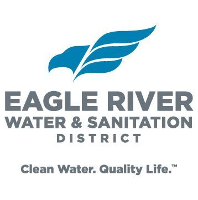Domestic violence reports increase over Thanksgiving – KMVT

Report on Domestic Violence Trends and Alignment with Sustainable Development Goals
Introduction: Holiday-Related Violence and its Impact on SDGs
A report from Twin Falls, Idaho, indicates a significant increase in domestic violence and abuse cases during the Thanksgiving holiday period. This trend, observed by the Twin Falls Police Department and the organization Voices Against Violence, highlights critical challenges to achieving several Sustainable Development Goals (SDGs). The issue directly impacts SDG 3 (Good Health and Well-being), SDG 5 (Gender Equality), and SDG 16 (Peace, Justice and Strong Institutions) by threatening the safety and security of individuals within their homes.
Causal Factors and the Imperative of SDG 3: Good Health and Well-being
The rise in domestic disputes is primarily attributed to heightened stress levels, which compromise the mental and physical well-being central to SDG 3. According to Angelica Soto, Director of Client Care at Voices Against Violence, key stressors include:
- Financial pressures related to holiday spending.
- Logistical challenges of event planning and coordination.
- Inter-family tensions regarding holiday arrangements.
Corporal-Detective Jayson McKelson of the Twin Falls Police Department identified alcohol consumption as a major exacerbating factor in these disputes. Reducing alcohol availability is recommended as a direct measure to mitigate conflict and protect the health and well-being of all family members.
Community Vigilance in Support of SDG 5: Gender Equality
Eradicating domestic abuse is a fundamental target within SDG 5, which calls for the elimination of all forms of violence against women and girls. Community awareness and intervention are crucial for creating a safe environment. Citizens are encouraged to recognize signs that an individual may be a victim of abuse.
Key Indicators of Abuse
- Behavioral Changes: A noticeable lack of engagement or withdrawal from social interaction.
- Controlling Behavior by a Partner: One person consistently speaking for the other or not allowing them to answer questions.
- Physical Signs: Wearing long clothing to hide injuries or using extra makeup to conceal bruises.
Recommended Approach for Intervention
Angelica Soto advises a careful, trust-based approach when speaking to a potential victim:
- Initiate a calm and honest conversation to express concern (e.g., “I noticed you were a little down, is everything ok?”).
- Focus on building trust and offering support rather than issuing demands or judgments.
- Assure the individual of your availability and willingness to listen.
- Observe their body language to ensure they are not uncomfortable, as the victim must be ready to seek help on their own terms.
Institutional Response and its Role in SDG 16: Peace, Justice and Strong Institutions
An effective response to domestic violence depends on accessible and accountable institutions, a core objective of SDG 16. The Twin Falls Police Department and Voices Against Violence exemplify the strong local institutions necessary to ensure justice and peace.
- The Twin Falls Police Department: Provides critical intervention when disputes escalate to physical violence or become uncontrollable, ensuring immediate safety and order.
- Voices Against Violence: Offers continuous, specialized support through resources like its 24-hour crisis hotline, providing a vital lifeline for victims.
This collaborative framework between law enforcement and community organizations is essential for providing justice, assistance, and a pathway to safety for victims, thereby fostering a more peaceful and inclusive society.
Support Mechanisms
Individuals in need of help or assistance regarding a domestic violence situation are encouraged to contact the Voices Against Violence 24-hour crisis line at (208) 733-0100.
Analysis of Sustainable Development Goals (SDGs) in the Article
1. Which SDGs are addressed or connected to the issues highlighted in the article?
-
SDG 5: Gender Equality
- The article’s central theme is domestic violence and abuse, a critical issue that SDG 5 aims to eliminate. Although the article does not specify the gender of the victims, domestic violence is a form of gender-based violence that disproportionately affects women and girls. The work of organizations like “Voices Against Violence” and the involvement of the police directly contribute to the goal of ending violence against all individuals, which is a cornerstone of achieving gender equality.
-
SDG 16: Peace, Justice and Strong Institutions
- This goal is relevant as the article discusses the reduction of violence within a community and the role of institutions in ensuring safety and justice. The mention of an “increase in reports of domestic violence” points to a disruption of peace. The article highlights the roles of the “Twin Falls Police Department” as a formal institution for intervention and “Voices Against Violence” as a support institution, both of which are essential for providing access to justice and assistance for victims, thereby building a more peaceful and just society.
-
SDG 3: Good Health and Well-being
- The article connects directly to SDG 3 by discussing the severe health and well-being consequences of domestic violence. It mentions the psychological impact, such as the “stress the holiday brings” and behavioral changes (“not engaged as much,” “a little down”), which affect mental well-being. It also refers to physical health impacts, advising people to look for signs of “physical abuse” like hiding “bruises.” The provision of a 24-hour crisis line is a measure to support the mental and physical well-being of victims.
2. What specific targets under those SDGs can be identified based on the article’s content?
-
Under SDG 5: Gender Equality
- Target 5.2: Eliminate all forms of violence against all women and girls in the public and private spheres. The article’s entire focus is on addressing “domestic violence and abuse,” which is violence occurring in the private sphere. The efforts of the police and Voices Against Violence are direct actions aimed at achieving this target.
-
Under SDG 16: Peace, Justice and Strong Institutions
- Target 16.1: Significantly reduce all forms of violence and related death rates everywhere. The article discusses measures to mitigate domestic disputes, such as limiting alcohol intake, and provides resources for intervention (“call the police for help”), which are direct efforts to reduce violence within the community.
- Target 16.3: Promote the rule of law at the national and international levels and ensure equal access to justice for all. By encouraging victims and witnesses to “call the police” and providing the number for a “24-hour crisis line,” the article promotes access to justice and official support mechanisms for victims of violence.
-
Under SDG 3: Good Health and Well-being
- Target 3.4: By 2030, reduce by one third premature mortality from non-communicable diseases through prevention and treatment and promote mental health and well-being. The article addresses the promotion of mental health by providing advice on how to support a victim (“Just be honest, say, ‘I noticed you were a little down, is everything ok?’”) and offering resources like the Voices Against Violence crisis line to help individuals cope with the severe stress and psychological trauma of abuse.
3. Are there any indicators mentioned or implied in the article that can be used to measure progress towards the identified targets?
-
Indicators for SDG 5 and SDG 16
- Prevalence of Violence (Implied): The statement that the police and Voices Against Violence “receive an increase in reports of domestic violence and abuse” during the holidays directly relates to indicators that measure the proportion of the population subjected to physical or psychological violence (such as Indicator 5.2.1 and Indicator 16.1.3). The number of reports serves as a direct, quantifiable measure of the problem’s prevalence.
- Reporting of Victimization (Implied): The advice to “call the police for help” when a situation “becomes physical” directly relates to Indicator 16.3.1 (Proportion of victims of violence… who reported their victimization to competent authorities). The article encourages this reporting, and tracking the rate at which victims contact the police or crisis lines would measure progress in access to justice.
-
Indicators for SDG 3
- Physical and Behavioral Signs of Abuse (Mentioned): The article explicitly lists qualitative indicators for identifying victims, which relate to health and well-being. These include “behavioral changes,” the victim not being “engaged as much,” wearing “longer clothing or wearing extra makeup to hide bruises.” These observable signs serve as early-warning indicators of negative health impacts from violence.
- Access to Support Services (Mentioned): The provision of the “Voices Against Violence’s 24-hour crisis line at (208) 733-0100” is a tangible resource. The number of calls received by this crisis line can be used as an indicator to measure the demand for and access to mental health and support services for victims of violence.
Summary Table of SDGs, Targets, and Indicators
| SDGs | Targets | Indicators Identified in the Article |
|---|---|---|
| SDG 5: Gender Equality | Target 5.2: Eliminate all forms of violence against all women and girls in the public and private spheres. | The “increase in reports of domestic violence and abuse” received by police and support groups serves as a measure of the prevalence of violence in the private sphere. |
| SDG 16: Peace, Justice and Strong Institutions | Target 16.1: Significantly reduce all forms of violence and related death rates everywhere. | The number of domestic violence reports filed with the Twin Falls Police Department is a direct indicator of local violence rates. |
| Target 16.3: Promote the rule of law… and ensure equal access to justice for all. | The encouragement to “call the police” and the availability of the “Voices Against Violence’s 24-hour crisis line” are indicators of access to justice and support mechanisms for victims. | |
| SDG 3: Good Health and Well-being | Target 3.4: …promote mental health and well-being. | Observable signs of abuse mentioned in the article, such as “behavioral changes,” being “a little down,” or physical signs like “bruises,” serve as qualitative indicators of negative impacts on physical and mental health. |
Source: kmvt.com
What is Your Reaction?
 Like
0
Like
0
 Dislike
0
Dislike
0
 Love
0
Love
0
 Funny
0
Funny
0
 Angry
0
Angry
0
 Sad
0
Sad
0
 Wow
0
Wow
0




















































.jpg.webp?itok=0ZsAnae9#)

























